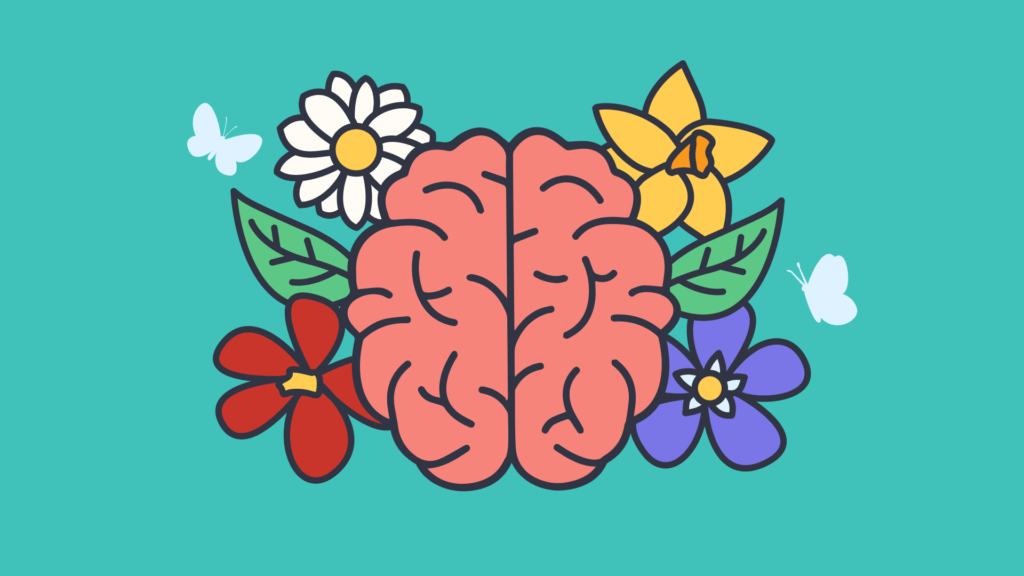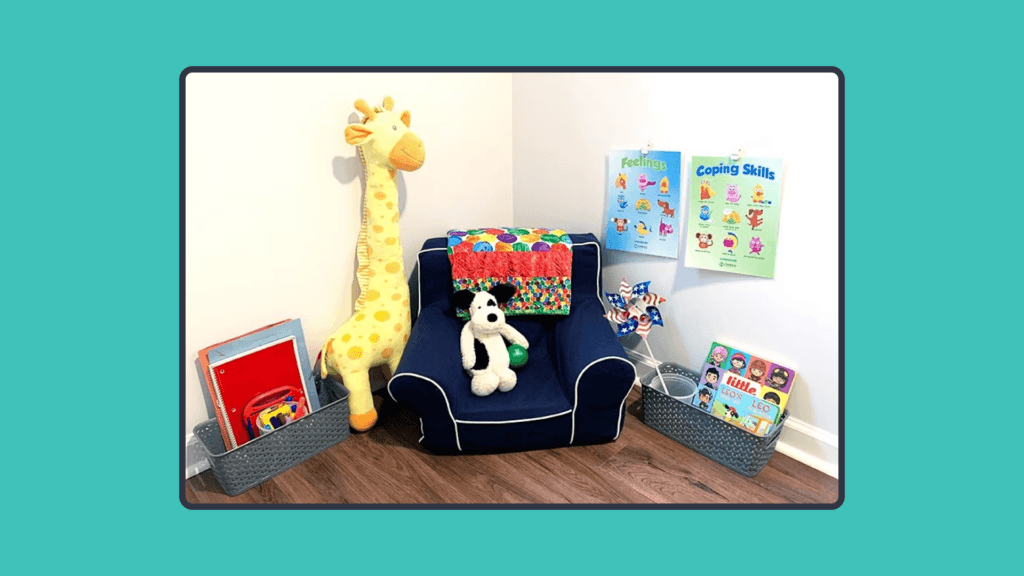6 Anger management strategies for elementary students
In this guide
Having strong emotions is a normal part of being human, but students need to be shown how to constructively deal with those strong feelings. Anger management is an important skill for students to learn alongside literacy and numeracy as it is also an important life skill.
The goal of anger management for elementary students is for them to learn how to regulate emotions and to express those emotions appropriately. It is about teaching students the basic skills needed for self-management.
1) Mindfulness

Mindfulness is being aware of your feelings and emotions. It is about being present in the moment and not letting your surroundings overwhelm you.
There are various ways to practice mindfulness, but they all include awareness of breathing and the body. Some ways to teach awareness of mind and body include stretching, body scanning, breathing techniques and yoga.
Specific breathing exercises can also be taught in mindfulness such as this exercise where students imagine smelling flower petals to inhale and then blowing them to exhale as a coping strategy rather than simply losing their temper.
2) Meditation
Similar to mindfulness, meditation focuses on breathing and centering your mind. There are several types of meditation, but guided meditation is a great place to begin the process with elementary students so that they can regulate their feelings and thoughts.
During guided meditation the guide speaks slowly and quietly. They verbally guide the listeners through a set of visual images. For example, they will instruct the listeners to relax specific parts of their body, isolating and relaxing through each muscle group.
Another way may be for the teacher to guide the students to imagine that they are in a specific place or experiencing a certain feeling. For example, imagining they are a spaceship flying through space, or a frog in a peaceful pond. This allows the student to remove themselves from their current mind and body space, relax in a safe environment, and return to their current one recentered and in a more balanced mindframe.
Steps for guided meditation:
- Students sit quietly in a comfortable position. If possible, dim the lights.
- Everyone should close their eyes.
- The teacher or a video guides the students through the meditation.
- Speak in a calm voice. Use repetitive action commands such as “breathe deeply twice”.
- When the meditation journey is complete, slowly lead students to return to normal activity.
3) Role playing
Teaching students to regulate their emotions is a skill that takes time to develop. Students do not always have positive models at home of emotional regulation and teachers are increasingly focusing on these skills so that students can have a healthy mindset both in and out of the classroom. Modeling and practicing these behaviors in the classroom can be a positive first step in teaching self-management.
Try role-playing scenarios that help them to act out how to handle situations before they arise.
Role-playing can help students to see situations from another student’s perspective. It can also teach them strategies for dealing with a range of emotions, including anger.
Possible scenarios for role-playing situations that may induce anger:
- Someone accidentally breaks something that belongs to you.
- The teacher tells you that recess is over.
- Someone is teasing you.
- A friend takes your spot in line.
- The class is being loud and not listening to the teacher.
- Losing a game.
Allow students time to plan for the role-play scenario, to do the role-playing activity, and to debrief after the activity.
Questions for debrief after role-playing scenarios:
- How did you feel in this situation?
- What are other ways to handle this situation?
- How can you calm yourself down before you react?
- What can you do when you start to feel angry?
4) Quiet space

Sometimes students need a place to calm down and recenter. Big feelings, such as anger, can be the result of overstimulation. Providing a quiet space for students to calm down can be helpful.
In a school I worked in previously, they had a calm down room. Students that needed a quiet and comfortable space could go there for a brief break.
I have also seen this space be in the nurse’s office or in an assistant principal’s office. In other places it is in the counseling office or specifically in the intervention counselor’s office. Some schools have even taken this further and have a designated sensory room where students have access to a range of sensory items to assist them in refocusing before returning to the classroom.
A teacher can also provide this space within their own classroom. Designate a corner of the room with comfortable seating. Include books, fodgets or other quiet materials that help with calming such as coloring books and crayons or soft music students can listen to with headphones.
There are ways that this can be modified to accommodate various needs:
- If teachers in a grade level teach in groups, have a desk set aside in each room where students can be sent to cool down. Sometimes a change of scenery can be useful.
- Allow a student that is feeling overwhelmed to take a brief walk outside of the classroom. Give the student a specific path to follow and then return to class. This is most appropriate for older elementary students, young children should not be walking unsupervised.
- Give a student that is showing signs of being overwhelmed a task to complete that refocuses them on something new. This action changes the student’s environment and can help them to focus on something other than the situation that is upsetting them.
5) Journaling or drawing about feelings

Journaling is a great way for students to calm down and reflect on their feelings. It is also a good way for a teacher to gain an understanding of what may be going on inside a student’s mind.
Allow students to write about their feelings and to describe how anger feels. They can compare how different emotions feel. Students can also write about ways they could handle situations that make them angry.
If writing is not developmentally appropriate, students can draw about their feelings. Have students draw pictures of what anger feels like inside themselves. Then they can draw a picture of what calm looks like inside themselves.
Compare the pictures and have a discussion about ways to cope with anger when we experience it. Students can discuss why they chose the colors in their picture to represent their feelings.
Writing and drawing can also be cathartic activities that help to reduce stress. These can be done during times of high stress, such as when a schedule is different, to help students to address their emotions before they spill out into behaviors.
6) Calm down jars
This is an activity that my own child has used to help him calm down from anxiety. It is an effective tool for many intense emotions like anger, anxiety, and fear. It is similar in application to having students countdown from 20 to calm down.
Directions:
- Fill (about ¾ full) an empty water bottle or other sealable jar with water.
- Put in two to three tablespoons of glitter and several squeezes of glue (about a tablespoon).
- Seal the lid lightly. Suggestion: use hot glue or super glue to seal the lid completely and avoid spills.
- Students can shake the jar up when upset and then watch the glitter fall while concentrating on their breathing.
This activity allows for a child to refocus their feelings and regulate their breathing. The glitter represents calming down.
Whatever method you use, ensure that students begin their emotional journey in your classroom and feel safe to express their emotions. Teach that emotions are a very real part of life and how we can best recognize and manage our feelings. Set your students on a path to a more balanced and emotionally healthy life.
References
- Serin, N.B. (2019). ‘The Impact of anger management training on anger, aggression and problem-solving skills of primary school students’, International Online Journal of Education and Teaching (IOJET),6(3), pp. 525-543. doi: http://iojet.org/index.php/IOJET/article/view/597
- Watling, R., and Schwartz, I. ‘Understanding and implementing positive reinforcement as an intervention strategy for children with disabilities’, AJOT: American Journal of Occupational Therapy, 58(1), pp. 113 Available at https://go.gale.com/ps/i.do

Mattie Farrer
briefcase iconAVID Site Coordinator / Content Curator
Mattie Farrer has been an educator in various grade levels and capacities during her career. She has a passion for supporting English learners and their language development. She also loves helping teachers reach all students.
Other posts
Want more content like this?
Subscribe for blog updates, monthly video releases, trending topics, and exclusive content delivered straight to your inbox.















